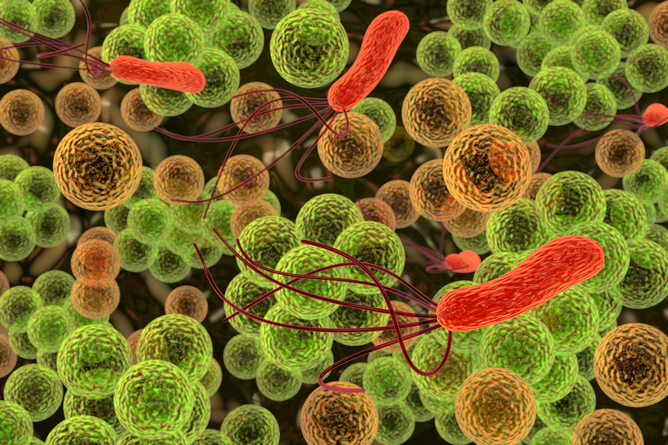A recent report from the United Nations has revealed some unsettling figures, warning that our planet could experience a 40 percent shortage of usable water by the year 2030 unless countries begin to substantially cut back on its usage. Because 70 percent of fresh water in the world is used on irrigation and agriculture, the most practical approach would be to change the ways in which people farm. The need is a rather ubiquitous one. Throughout California’s Central Valley, farmers have begun drilling for water, and they are now tapping into stores that are over 30,000 years old. Kenya is now being faced with its worst drought since 2000, and farmers have begun hand-digging wells in order to gain hold on the receding water table, meanwhile, it’s estimated that as many as one-in-ten Kenyans are going hungry.
This might seem to be as much that both of these regions have in common, but that means that a game-changing solution could easily be put into place in both economies, making use of a resource we hardly knew was there. Beneath the soil, surrounding the roots of plants are swarms of helpful bacteria that number in the billions. These microbiomes can be found in soil all across the globe: along the hard-hit Kenyan coast, right to New England’s notoriously rocky soil.
In each shovelful of dirt, there are armies of bacteria, along with microscopic fungi and protozoan, all of which carry out life processes that the soil is dependent upon for yielding crops, but bacteria substantially outnumber the other microorganisms. Even in bygone centuries, bacteria effectively provided us with a number of products – from cheeses, wines, and vinegars, to laundry detergents and even medicine. Now, it could seem that aside from a food source, they could be helpful allies in actually the growth of standard produce. Actinomyocytes – which are just one type of the diverse microscopic ecosystem found in the dirt, have been used to synthesize a number of modern day antibiotics, such as erythromycin, used to treat bronchitis and whooping cough, among many other infections.
Another type of bacteria known as pseudomonas, is able to metabolize a number of chemicals and fertilizers into useful nutrients for the soil, while clostridium is able to thrive despite an absence of oxygen, breathing anaerobically from the soil’s nitrogen supply as it feeds the plants their nutrients. Not only does this trait make it important, but it’s also an important sign that the bacteria, with their incredibly short lifespans, are among the few organisms that can adapt quickly to an ever changing climate. Manipulating them to our advantage could be a primary means of our species’ own survival.
At the time of this writing, there are scientists throughout the five continents that are regularly digging up evidence for the beneficial symbiotic relationships that exist among microbes and crops such as corn, cotton, tomato and peppers, even varieties that have been genetically modified. Plants typically give off a liquids rich in carbon, providing sustenance for the microbes. Some of these liquids are the result of the plants responding to environmental stressors such as attacks from insects, another rising concern as we are seeing an increase in invasive insect species. Other chemicals are produced due to increases in water following a deluge. The soil bacteria are sensitive to these chemical messages, and they then secrete chemicals of their own which can strengthen the already complex defenses of the plants.
As an example, there are studies done that have shown the right combination of beneficial microbes exposed to the seeds directly can be as effective as commercial pesticides against one particular type of worm known as the rice leaf-folder, which will wraps itself inside and then eat away the leaves of younger plants. Other studies have demonstrated that there are soil microbes that will significantly increase the overall growth and yields of important crops. One study from Germany, observed the same field over a 10-year period, learning that beneficial microbes have increased the rate of growth in maize plants but also boosted the prevalence of phosphorous as well as other elements that are critical to the growth of crops in the soil. In Colombia, where the effects of famine due to climate change are already being experienced, microbiologists have begun to mass-produce bacteria to colonize cassava plants, an economic staple. The result was an increase in the yields of cassava by 20 percent.
There are a number of farmers across the globe who strive to adapt to climate change, a sensitive issue as many established farms, both family and commercial, were plotted based on their precise ability for growing crops. As warming trends advance, dry areas are projected to become drier, and wet areas wetter. Those who have been hit hardest are small-scale farmers who grow their own crops with limited resources. A simple increase in their yield may benefit them economically as boosted crop sales generate cash and higher yields also allow them room to grow other crops. A study conducted using GMO cotton in India over a ten year period, ending in 2013, showed improved nutrition in the diets of subsistence farmers who grew the cotton for this reason – that they could grow more vegetables for themselves, while those who continued growing standard crops ate a diet primarily consisting of cereal. Additional revenue from the crops may then be invested in a wide array of “climate-smart” farming efforts geared towards the further conservation of water and soil.
There’s more good news, however, as to how these microbes may help guard against droughts. Some new studies have shown that microbes have a direct role to play in helping soil bacteria shield crops from harsh dry seasons while also improving their growth and ability to absorb nutrients from rapidly drying soil. If the crops are beneficial to the bacteria, they may help them adapt to extreme highs and lows as well as massive flooding events.
In one such study, the scientists observed that pepper plants cultivated within arid desert-like conditions can function as “resource islands” wherein they attract and manage to trap in any bacteria that sustain plant development during the periods when water is scarce. At present, we know that our bodies are dependent in many ways on microbes as well, which aid in processes like digestion, and may even control traits that we once attributed to genetics, such as body weight. Perhaps, this relationship with plants is not all that different. There was another study which identified soil bacteria that can actually signal the plants to temporarily open and shut the water absorbing pores on their leaves. Not only does this guard against fungi and other bacteria that may cause disease, but it can also keep the moisture trapped inside the plant.
So what’s the best way to go about cultivating this new biotechnology? Particularly at a time when many people believe GMO’s themselves to be harmful.
As we speak, companies involved in the production of foods and medicine, such as Nozozymes, Monsanto and Bayer Crop Sciences, are already launching their own investigation in to how we may go about the commercialization of soil bacteria. In their stead, are also several start-up companies that work tirelessly around the clock in order to commercialize microbial cocktails for growing food, but in all, we are only at the dawn of what may be an exciting new era of realizing the full potential that microbes have to offer.
The United Nations has officially designated 2015 as its International Year of Soil, part of a systematic plan to focus on not only climate change, but one of the problems it brings along with it – the issue of world hunger. Therefore, governments, funders and researchers of all stripes have been taking a serious look into the function of healthy soil in helping the United Nations reach its goal of achieving food security, while the population continues to climb past the seven billion mark, and the prolonged droughts of climate change continue to lower the yields of important food crops. While these initiatives often do a good job looking at the big picture, considering the potential that crop surpluses will have on communities and farmers, one thing that is so often overlooked is hidden in the soil itself, many species of which have evolved over the last six thousand years with their crops, part of a functioning ecosystem in which the crops themselves are essential to the life processes of the soil microbes.
At the end of the day, however, the use of soil microbes for producing better harvests may just be a single phase out of a trying and complex journey as we continue to improve the quality of our food. Even maintaining the quality of the natural resources may be a continuous battle, with climate change expected to worsen by the mid-21st century. Already there are efforts underway to cultivate new GMO’s capable of thriving in drier climates, extracted from beans.
As the climate is changing and unnatural changes like a continuous increase of CO2 continues to build up, risking the destruction of countless natural sanctuaries such as the Amazon River basin, now one of the most important climate sinks on the map, perhaps our best hope in offsetting the impending devastation may lie within nature itself – harvesting what the Earth already offers, in order to preserve our planet for the future.
|
James Sullivan
James Sullivan is the assistant editor of Brain World Magazine and a contributor to Truth Is Cool and OMNI Reboot. He can usually be found on TVTropes or RationalWiki when not exploiting life and science stories for another blog article. |



